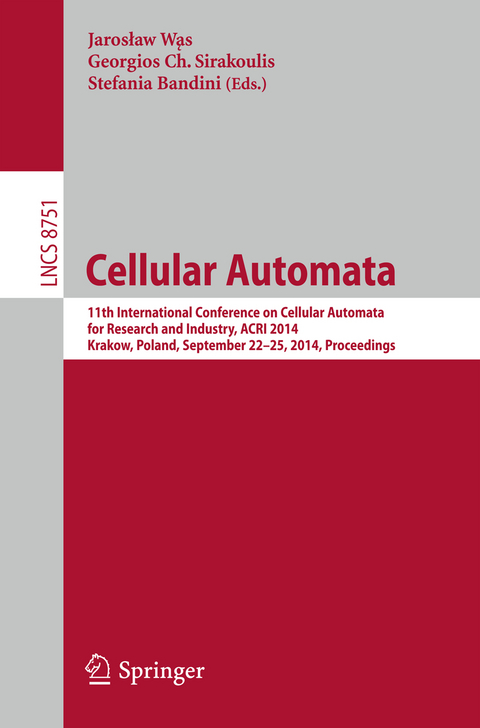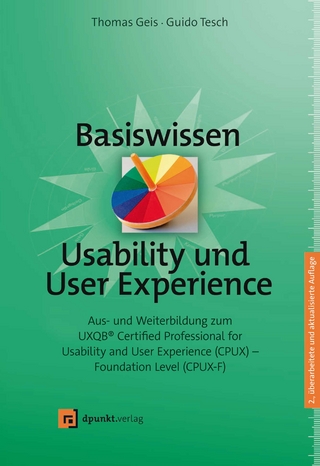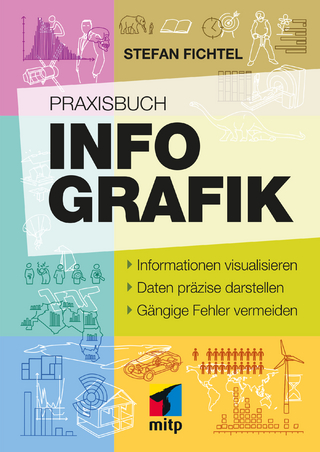
Cellular Automata
Springer International Publishing (Verlag)
978-3-319-11519-1 (ISBN)
Conductivity, Memristivity and Creativity in Cellular Automata.- Automata Formalism.- Towards a Comprehensive Understanding of Multi-state CellularAutomata.- Iterative Arrays with Set Storage.- Isotropic Cellular Automaton for Excitable Media with Random Neighbor Selection.- Power Spectral Analysis of the Computation Process by Rule 110.- Cellular Automata and Formulae on Monoids.- A Scalable Method for Constructing Non-linear Cellular Automata with Period 2n - 1.- Systolic Dissemination in the Arrowhead Family.- Cellular Automata Dynamics and SynchronizationOn the Dynamics of Multi-information in Cellular Automata.- Lyapunov Exponents of One-Dimensional, Binary Stochastic Cellular Automata.- Synthesis of Non-uniform Cellular Automata Having only Point Attractors.- Non Uniform Cellular Automata Description of Signed Partition Versions of Ice and Sand Pile Models.- Variable Entangling in a Quantum Battle of the Sexes Cellular Automaton.- Experimental Finitization of Infinite Field-Based Generalized FSSP Solution.- Cellular Automata (CA) Model for Primality Test.- Numerical Modelling of Fracture Based on Coupled Cellular AutomataFinite Element Approach.- Two-Layer CA Model for Simulating Catalytic Reaction at Dynamically Varying Temperature.- Modelling Ordered Nanopourous Structures by Anodization via Cellular Automata.- Overview of Cellular Automaton Models for Corrosion.- Cellular Automata Finite Element Approach for Modelling Microstructure Evolution under Thermo-Mechanical Processing Conditions.- A Preliminary Cellular Model for Secondary Lahars and Simulation of 2005 Case of Vascun Valley, Ecuador.- Vulnerability and Protector Control: Cellular Automata Approach.- UNDATA: A Preliminary Cellular Automata Model for Tsunami Simulation.- Modeling Rainfall Features Dynamics in a DEM Satellite Image withCellular Automata.- Cellular Automata Model with Game Theory for Power Management of Hybrid Renewable Energy Smart Grids.- A Novel Algorithm for Coarse-Grainingof Cellular Automata.- Cellular Automata Model for Protein Structure Synthesis (PSS).- The Basic Reproduction Number for Chagas Disease Transmission Using Cellular Automata.- Modelling Spatial Distribution of the Barents Sea Cod Fishery.- Training Cellular Automata to Simulate Urban Dynamics: A Computational Study Based on GPGPU and Swarm Intelligence.- Cellular Automaton Approach to Arching in Two-Dimensional Granular Media.- Modeling of Friction Dynamic Motion by Cellular Automata.- Agent Based Simulation of Spreading in Social-Systems of Temporarily Active Actors.- Cellular Automata for Modeling Language Change.- Sznajd Model with Memory.- Detecting Emergent Phenomena in Cellular Automata Using Temporal Description Logics.- Cellular Automata-Based Hardware and Computing Direction-Reversible Self-Timed Cellular Automata for Delay-Insensitive Circuits.- Implementation of a Cellular Automaton with Globally Switchable Rules.- Highly Compact Automated Implementation of Linear CA on FPGAs.- Shortest Path Computing Using Memristor-Based Circuits and Cellular Automata.- Cryptography, Networks and Pattern Classification with Cellular Automata Generation of TPMACA for Pattern Classification.- Sharing Secrets by Computing Preimages of Bipermutive Cellular Automata.- Inapplicability of Fault Attacks against Trivium on a Cellular Automata Based Stream Cipher.- Cellular Automata Approach to Maximum Lifetime Coverage Problem in Wireless Sensor Networks.- C and CA - Int. Workshop on Crowds and Cellular AutomataApplication of NIST Technical Note 1822 to CA Crowd Dynamics Models Verification and Validation.- Effect of Group Behavior on Crowd Dynamics.- Effects of Boundary Conditions on Single-File Pedestrian Flow.- Simulation Study of the Spiral Motion of Pedestrians: A Cellular Automata Approach.- CA Crowd Modeling for a Retirement House Evacuation with Guidance.- Multiscale Simulation of Pedestrians for Faster Than Real Time Modeling in Large Events.- Cellular Automata Pedestrian Movement Model SIgMA.CA:Model Parameters as an Instrument to Regulate Movement Regimes.- Case Study of Phase Transition in Cellular Models of Pedestrian Flow.- Simulation of Public Opinion with Ideas of Cellular Automata.- Estimating Speeds of Pedestrians in Real-World Using Computer Vision.- Geometric Characterization of Hereditarily Bijective Boolean Networks.- Inner-Independent Radius-Dependent Totalistic Rule of Universal Asynchronous Cellular Automaton.- Bifurcations of Local Structure Maps as Predictors of Phase Transitions in Asynchronous Cellular Automata.- Computing Symbolic Steady States of Boolean Networks.- Equivalences in Multi-valued Asynchronous Models of Regulatory Networks.- Effective Parallelism Rate by Reversible PCA Dynamics.- Quick Convergence to a Fixed Point: A Note on Asynchronous Elementary Cellular Automata.- A Study of Aggregated Speed in Road Networks Using Cellular Automata.- A New Cellular Automaton Model with Spatiotemporal Process of Lane Changing Execution.- Cellular Automaton Model with Non-hypothetical Congested Steady State Reproducing the Three-Phase Traffic Flow Theory.- Asymmetric Lane Change Rules for a Microscopic Highway TrafficModel.- Interactions between Multiple Junctions.- Modeling Disruption and Recovery of Traffic in Road Networks.- Simulation of Pedestrians Behavior in a Shopping Mall.- How Agents Can Form a Specific Pattern.- An Integrated Model for the Simulation of Pedestrian Crossings.- Agent-Based Pedestrian Activity Simulation in Shopping Environments Using a Choice Network Approach.- Software Implementation of Population of Cognitive Agents Learning to Cross a Highway.- The Effects of Supraregional Innovation and Production Collaboration on Technology Development in a Multiregional World: A Spatial Agent-Based Model Study.
| Erscheint lt. Verlag | 5.9.2014 |
|---|---|
| Reihe/Serie | Lecture Notes in Computer Science | Theoretical Computer Science and General Issues |
| Zusatzinfo | XX, 713 p. 350 illus. |
| Verlagsort | Cham |
| Sprache | englisch |
| Maße | 155 x 235 mm |
| Gewicht | 1098 g |
| Themenwelt | Informatik ► Software Entwicklung ► User Interfaces (HCI) |
| Mathematik / Informatik ► Informatik ► Theorie / Studium | |
| Schlagworte | Algorithm analysis and problem complexity • Asynchronous cellular automata • Automata • Biological modeling • Cellular Automata • Crowd dynamics • cryptography • Engineering • Environmental Modeling • Hardware • Modeling and Simulation • Nature Inspired Computing • Parallel Computing • Physics • quantum computer • Swarm intelligence • Theory of Computation • Traffic • Unconventional Computing |
| ISBN-10 | 3-319-11519-7 / 3319115197 |
| ISBN-13 | 978-3-319-11519-1 / 9783319115191 |
| Zustand | Neuware |
| Haben Sie eine Frage zum Produkt? |
aus dem Bereich


